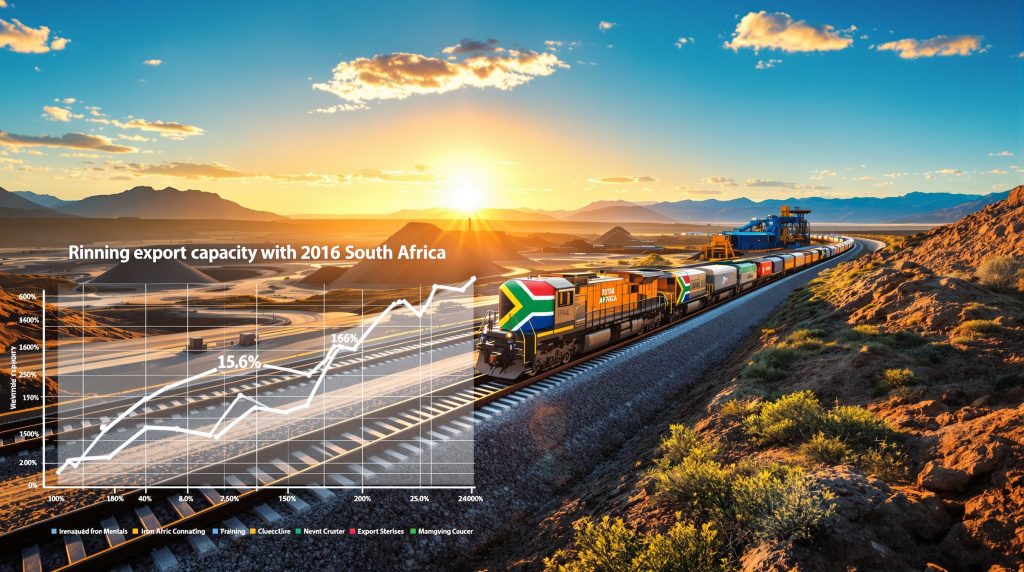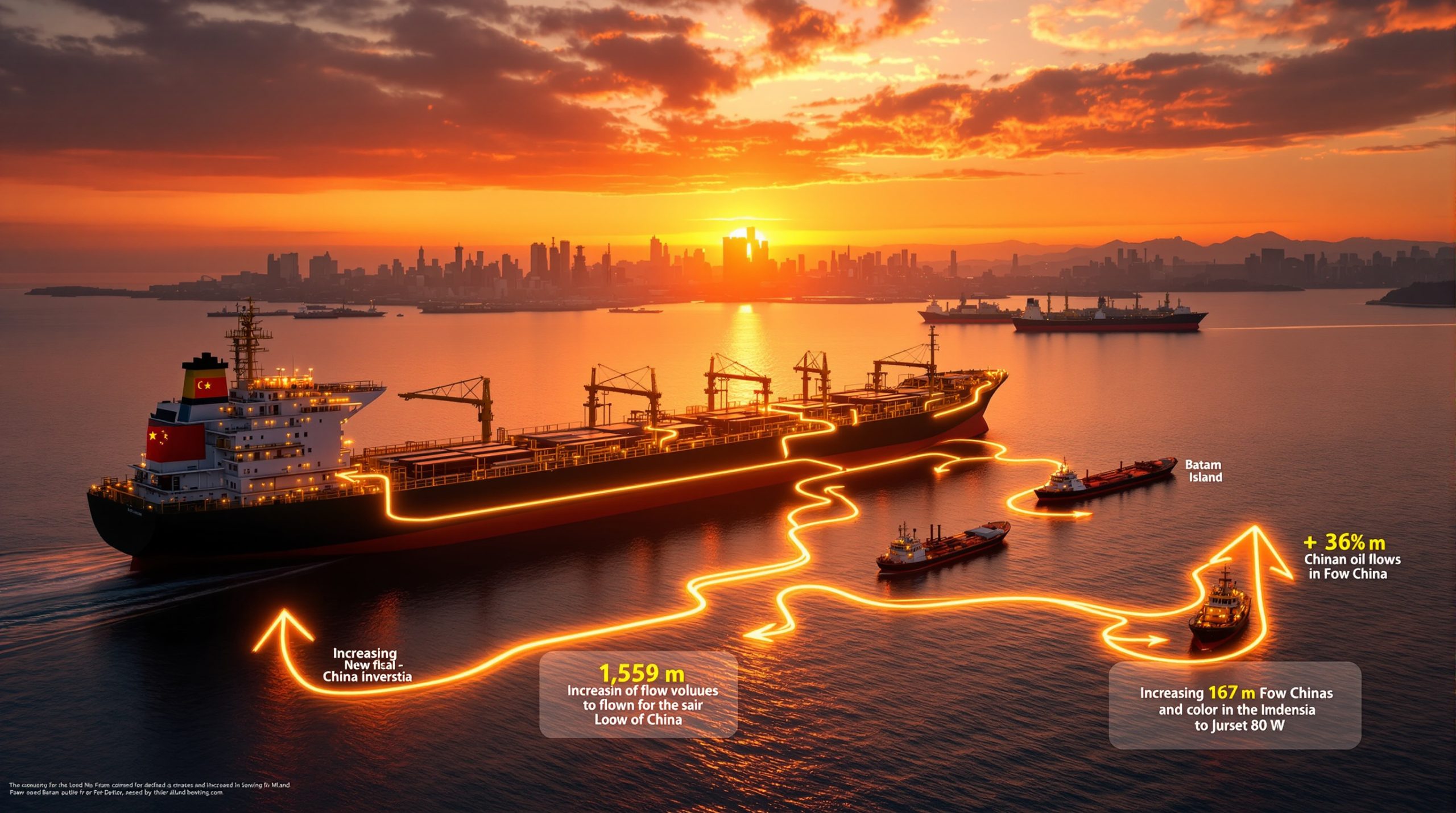Why Are Rail Reforms Critical for South Africa's Economy?
South Africa's mining sector represents a cornerstone of the national economy, contributing approximately 8% to GDP and providing employment for more than 450,000 people. Despite this economic significance, the sector faces substantial challenges in reaching its full potential due to logistical constraints.
The country's rail infrastructure, once regarded as the most advanced on the African continent, has experienced dramatic decline over the past decade. Rail capacity utilization has plummeted by nearly 40% since 2018, forcing mining companies to shift toward road transport alternatives that increase costs, environmental impact, and ultimately reduce export competitiveness.
In response to these challenges, the South African government has initiated comprehensive South Africa rail reforms designed to modernize infrastructure, enhance operational efficiency, and integrate private sector participation. These reforms represent a fundamental shift in the nation's approach to managing critical infrastructure assets, with potential benefits extending throughout the broader economy.
How Did South Africa's Rail Infrastructure Deteriorate?
Historical Context and Decline
South Africa's extensive rail network spans over 21,000 kilometers and was previously responsible for transporting more than 80% of the country's freight during the 1990s. However, several critical factors contributed to its gradual deterioration:
-
Chronic underinvestment in maintenance and modernization programs, with capital expenditure falling approximately 45% below required levels between 2015-2022
-
Significant operational inefficiencies within Transnet, the state-owned rail operator responsible for network management
-
Alarming increases in theft and vandalism of rail infrastructure, which surged by 177% during the COVID-19 pandemic period
-
Persistent management challenges and governance issues within state entities responsible for rail oversight
-
Intensifying competition from increasingly efficient road transport operators
This deterioration reached crisis proportions in 2022-2023, when rail capacity constraints cost mining companies an estimated R50 billion ($2.7 billion) in lost export opportunities, with particularly severe impacts on coal, iron ore, and manganese producers.
Impact on Mineral Exports
The rail system's decline has had profound consequences for South Africa's mineral beneficiation opportunities and export capabilities:
-
Coal exports through Richards Bay Coal Terminal declined from 76 million tonnes in 2017 to fewer than 50 million tonnes in 2023
-
Iron ore exports fell by approximately 12 million tonnes annually from potential capacity
-
Manganese producers faced shipping delays averaging 45-60 days, disrupting supply chain reliability
-
Mining companies implemented production curtailments due to stockpile constraints at mine sites when rail transport proved inadequate
What Are the Key Components of South Africa's Rail Reform Strategy?
Regulatory Framework Transformation
The foundation of South Africa's rail reforms lies in creating a new regulatory framework that enables private sector participation while maintaining state ownership of core infrastructure assets. Key elements include:
-
The Economic Regulation of Transport Act, establishing an independent regulator for the transport sector
-
Separation of infrastructure management responsibilities from train operations
-
Creation of an independent Infrastructure Manager responsible for:
- Network maintenance and ongoing development
- Slot allocation processes for operators
- Pricing regulation and oversight
- Safety monitoring and enforcement
- Centralized traffic management
This structural separation aims to establish a level playing field for all operators while ensuring coordinated network development across the system.
Private Sector Participation Model
Rather than pursuing full privatization, South Africa has adopted a concessioning model allowing private operators to supplement Transnet Freight Rail's operations. Key features include:
-
Qualification of 11 private companies approved to operate on 41 strategic routes
-
Long-term contracts spanning up to 10 years for private operators
-
Ambitious targets to increase freight capacity by 20 million tonnes annually by 2026/27
-
Strategic focus on bulk commodity corridors serving mining operations
-
Requirements for private sector investment in rolling stock and terminal facilities
This balanced approach aims to capture private sector efficiency benefits while maintaining public oversight of strategic infrastructure assets.
How Will Rail Reforms Benefit the Mining Sector?
Enhanced Export Capacity and Reliability
The reforms target significant improvements in the reliability and capacity of mineral transport systems:
-
Projected 30-40% increase in rail utilization rates anticipated by 2028
-
Reduction in transit times by an estimated 25-35%
-
Improved scheduling predictability, with on-time performance targets set at 85%
-
Enhanced port-rail coordination at major export terminals
-
Reduction in cargo dwell times at ports
These operational improvements will allow mining companies to optimize production schedules, reduce expensive stockpile requirements, and meet international customer commitments more reliably.
Cost Efficiency and Competitiveness
Rail transport offers substantial cost advantages over road transport for bulk minerals:
-
Rail transport costs approximately 40-60% less per tonne-kilometer than road transport for bulk commodities
-
Reduced reliance on road transport will lower overall logistics costs by an estimated 15-20%
-
Lower transport costs will significantly improve the competitiveness of South African minerals in international markets
-
Operational efficiencies from improved rail services could reduce mine-to-port logistics costs by up to R35 billion annually
Environmental and Safety Benefits
The shift from road to rail transport delivers significant environmental and safety advantages:
-
Rail transport produces approximately 75% less carbon emissions per tonne-kilometer compared to road transport
-
Reduced heavy vehicle traffic will improve road safety and reduce accident rates
-
Lower road maintenance costs for public infrastructure
-
Reduced congestion around mining areas and port cities
What Challenges Must Be Overcome for Successful Implementation?
Investment Requirements and Funding
The rail reform program requires substantial capital investment:
-
Estimated R100 billion ($5.4 billion) needed for network rehabilitation and expansion over the next decade
-
Private operators must invest approximately R30 billion in rolling stock and terminal facilities
-
Transnet requires significant recapitalization to fulfill its infrastructure management role
-
Funding mechanisms must balance commercial viability with affordable access fees
Coordination and Implementation Complexities
Successful implementation faces several coordination challenges:
-
Integration of multiple private operators with Transnet's continuing operations
-
Alignment of rail capacity with port expansion plans
-
Coordination with mining companies' production and expansion strategies
-
Development of interoperable technical standards and systems
-
Management of transition risks to avoid service disruptions
Skills Development and Capacity Building
The reforms also require significant human capital development:
-
Training programs for an expanded rail workforce
-
Development of regulatory capacity and expertise
-
Transfer of operational knowledge and best practices
-
Building project management capabilities for infrastructure upgrades
Which Mining Commodities Will Benefit Most from Rail Reforms?
Coal Export Revival
South Africa's coal industry, which has struggled with rail constraints, stands to benefit significantly:
-
Potential to restore coal exports to 70+ million tonnes annually
-
Improved competitiveness in Asian markets where South African coal competes with Australian and Indonesian suppliers
-
Enhanced ability to capitalize on transitional energy demand in developing markets
-
Support for approximately 45,000 jobs in the coal mining sector
Iron Ore Export Expansion
The iron ore sector will gain expanded export capacity:
-
Potential increase of 10-15 million tonnes in annual export volumes
-
Improved reliability for customers in China and other Asian markets
-
Support for expansion projects at major mines in the Northern Cape
-
Enhanced competitiveness against Australian and Brazilian suppliers
Critical Minerals Supply Chain Enhancement
The reforms will also benefit emerging critical minerals sectors:
-
Improved logistics for manganese exports, where South Africa holds over 70% of global reserves
-
Enhanced transport options for chrome and platinum group metals
-
Development of logistics solutions for emerging battery minerals production
-
Support for downstream processing initiatives through more reliable supply chains
How Do the Rail Reforms Align with Regional Development?
Integration with Regional Transport Networks
South Africa's rail reforms have important regional dimensions:
-
Alignment with the Southern African Development Community (SADC) Regional Rail Master Plan
-
Enhanced connectivity with neighboring countries' rail networks
-
Potential for improved cross-border mineral transport from Botswana, Zimbabwe, and Mozambique
-
Support for regional industrialization initiatives
Economic Development Beyond Mining
The benefits extend beyond the mining sector:
-
Creation of an estimated 25,000-30,000 direct and indirect jobs in the rail sector
-
Development of supporting industries for rail equipment maintenance and manufacturing
-
Reduced transport costs for agricultural and manufacturing exports
-
Improved regional trade competitiveness
What Is the Timeline for Reform Implementation?
Short-Term Priorities (2023-2025)
The initial phase focuses on regulatory and structural changes:
-
Completion of legislative framework and regulatory establishment
-
Functional separation of Transnet's infrastructure and operations divisions
-
Award of initial third-party access agreements
-
Commencement of priority maintenance programs
Medium-Term Developments (2026-2028)
The middle phase concentrates on capacity expansion:
-
Full implementation of private operator services
-
Completion of major corridor rehabilitation projects
-
Integration of new rolling stock and technology systems
-
Achievement of initial capacity expansion targets
Long-Term Vision (2029 and Beyond)
The long-term strategy aims for comprehensive modernization:
-
Network expansion to underserved mining regions
-
Implementation of advanced signaling and control systems
-
Development of specialized mineral handling facilities
-
Integration of sustainable technologies such as hydrogen locomotives
What Are the Investment Implications of Rail Reforms?
Mining Sector Investment Stimulus
The reforms are expected to catalyze new mining industry evolution investments:
-
Potential unlocking of approximately R120 billion in mining capital projects previously constrained by logistics concerns
-
Improved project economics for marginal deposits due to lower transport costs
-
Enhanced investor confidence in South African mining assets
-
Support for brownfield expansions at existing operations
Rail Sector Investment Opportunities
The reforms also create investment strategy components and opportunities within the rail sector:
-
Private operator partnerships and concessions
-
Rolling stock leasing and financing arrangements
-
Terminal and loading facility development
-
Technology and systems implementation projects
Supporting Infrastructure Development
Complementary infrastructure investments will be needed:
-
Port capacity expansions to handle increased mineral volumes
-
Intermodal facilities for efficient rail-road transfers
-
Energy infrastructure to support electrified rail operations
-
Communications and digital infrastructure for modern rail management
How Do South Africa's Rail Reforms Compare Globally?
International Best Practices and Lessons
South Africa's approach draws on international experiences while adapting to local conditions:
-
Adoption of elements from successful rail reforms in Australia, Brazil, and European markets
-
Avoidance of challenges faced in previous privatization attempts in other African countries
-
Balance between private sector participation and strategic public control
-
Phased implementation approach to manage transition risks
Potential Model for African Infrastructure Development
The reforms could serve as a template for other African countries:
-
Demonstration of public-private partnership models for infrastructure development
-
Example of regulatory frameworks that balance competition with coordination
-
Showcase for regional integration of transport networks
-
Model for leveraging natural resource sectors to fund infrastructure modernization
FAQ: South Africa's Rail Reforms and Mineral Trade
What is the current state of South Africa's rail network?
South Africa's rail network spans over 21,000 kilometers but has experienced significant deterioration in recent years. Operational capacity has declined by approximately 40% since 2018, with frequent service disruptions, maintenance backlogs, and security challenges affecting reliability. This decline has forced mining companies to shift volumes to road transport, increasing costs and reducing export competitiveness.
How will private sector participation work in the reformed rail system?
The reforms establish a concessioning model where qualified private operators can access the national rail network alongside Transnet Freight Rail. Private companies will invest in their own locomotives and rolling stock while paying access fees to use the state-owned rail infrastructure. Contracts will typically span 5-10 years, with performance requirements for service reliability and volume commitments.
Will the reforms affect passenger rail services?
The current reforms primarily target freight rail operations, particularly those serving the mining sector. Passenger rail services, mainly operated by PRASA (Passenger Rail Agency of South Africa), are undergoing separate reform initiatives. However, some infrastructure improvements from the freight rail reforms will benefit the overall network, potentially improving passenger service reliability in shared corridors.
How will the reforms impact environmental sustainability?
By shifting mineral transport from road to rail, the reforms will significantly reduce carbon emissions. Rail transport produces approximately 75% less carbon per tonne-kilometer compared to trucks. Additionally, modernized rail operations will incorporate energy-efficient technologies, including regenerative braking systems and exploration of alternative propulsion systems such as hydrogen for non-electrified routes. These developments align with broader mining's decarbonisation trends across the industry.
Further Exploration:
Readers interested in learning more about South Africa's infrastructure development can also explore related educational content, such as South Africa's rail revitalisation plan and the role of resource capital funds in mining infrastructure development.
Ready to Discover the Next Major Mining Opportunity?
Stay ahead of the market with Discovery Alert's proprietary Discovery IQ model, which instantly notifies investors of significant ASX mineral discoveries and translates complex data into actionable insights. Learn how major discoveries can generate substantial returns by visiting Discovery Alert's dedicated discoveries page.




